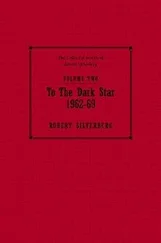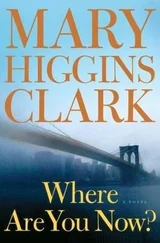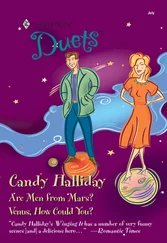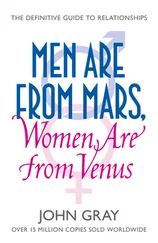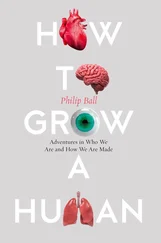It wasn’t just marketing and social purpose that Generation X brought to business, it was also design. Products and services needed to be cool if they were going to be at all desirable (whereas now in our world of frenetic speed, practicality is enough. Just ask Amazon – the ugliest and most successful service in the world).
Matt Roberts was single-minded in his pursuit of design and lifestyle cues when he was setting up his fitness brand. ‘I was fascinated by the cool stuff, about how you lived your life. I spent a lot of time going round anywhere that was cool to try and get bits of what they did. I got my hair cut in Nicky Clarke by Nicky because he was then the stylist. I used to go and stay at the Wilton Hotel in New York because that was the cool place to go – it was dark and moody. I’d eat at Quaglino’s, and when Conran opened the restaurant Mezzo, that was a big deal. I picked up things from magazines like The Face and Arena . That was a really formative time to be in London. It was the start of what happens now. This hotel here, this is the net result of all of those different things.’
Matt is sitting in the Mondrian, one of London’s latest ‘design’ hotels, in a modern lobby designed by Tom Dixon (X-er), drinking expensive coffee on tasteful yet slightly challenging furniture. Roberts is right at home. His tightly disciplined body is neatly clothed in Boss and Prada, while the scent of Tom Ford hangs about his neck. Initially, Roberts trained to be a sprinter, with his sights set on the Olympics. He dropped out when he realised his friend and training partner – Darren Campbell – was going to be a whole lot better than him. Roberts didn’t want to be second best, so instead he turned to business and for inspiration looked to America, which in the Eighties and early Nineties was way ahead of London both in lifestyle and business.
‘The first time I went to New York, in the mid Nineties, I thought it was the coolest place on the planet,’ he says. ‘I started doing courses there and I’d come back fired up. But then London would drag you down slightly. It didn’t have quite the same drive. What the US did was package things well, the front sell was really good. Behind it, the substance wasn’t that amazing, but it looked incredible.’
What was happening in America wasn’t that exposed over here – there was much less media to tell you about it, which gave New York cool hunters an opportunity in Europe. What Roberts saw in New York was a swelling fitness industry – better standards in terms of what was on offer in gyms, and greater engagement in the population. If getting fit could be made to look a little more attractive, and it could fit in with people’s lifestyles rather than the other way round, maybe it might just catch on. So he launched a bespoke training service in Mayfair, made his gyms high design and hi tech, and started attracting aspirational clients like Geri Halliwell and Elle Macpherson.
Roberts had his opportunity. Celebrities began to take on personal trainers, and paparazzi pictures of LA gym bunnies like Madonna, Jennifer Aniston and Gwyneth in their sportswear ramped up the idea fitness could actually be a fashion choice. With no cool gyms to go to, people turned to books, which served Roberts well: ‘In my prime, we’d sell 40,000 copies of a book a month. One of my books was selling in 26 countries, doing phenomenal things.’
The marketing plan was working.
4
When Noel Gallagher Went to Number 10
Marketing, advertising, PR, and any of the media that relied on those things, from magazines to TV stations, were proliferating. Digital wasn’t happening yet (we weren’t even using email – imagine that), nor were mobile phones much of a thing. But media was growing – mass media as it began to be known. Media studies courses became absurdly popular, because media looked like it wasn’t just about making money, it was about being creative and having a good time.
‘I remember after uni some people were going off to get jobs in management consultancy,’ says Richard Reed. ‘What was management consultancy? They said they were going to get jobs in the City and I was like, “What? London?” I didn’t even know the “City” existed. I went for an interview with P&G to be a sales person, and I thought, “Really? Drive round shops selling shampoos? No thanks.” I went into advertising because it sounded fun.’
For those then that couldn’t sing or dance or write or act or draw or paint or take photographs or design or make – there was advertising. The advertising industry would like to think of itself as one of the cornerstones of Britain’s creative industries, but Britain’s creative industries would be horrified to include it in their midst. ‘I remember making this ad for a car brand,’ says Reed. ‘It was pictures of ordinary people holding placards with surprising things written on them. A picture of a guy in a suit holding a sign saying “By night I’m Melinda” – that kind of thing. At the time the artist Gillian Wearing had done exactly that and won the Turner Prize. The advertising creative had totally ripped it off.’
The advertising industry regards itself with astonishing self-importance. They hand out awards for bravery. Bravery, in advertising. When I started in the advertising business a few years ago, my Sunday Times colleague Marie Colvin had just lost her life in Syria reporting on the atrocities. I found it very hard to swallow someone being awarded a gong and a cash prize for their ‘bravery’ in rebranding an estate car.
But advertising can make a positive contribution to culture. You always remember the great ads – You’ve been Tango’d, Budweiser’s Wassup? and Marky Mark’s Calvins were Nineties classics. Nowadays the John Lewis Christmas TV spot, Nike’s sponsorship of young creative collectives and General Electric’s reporting on scientific innovation are all just as influential. But the advertising world is now largely swamped by digital: irritating pop-up ads and low-grade, interruptive creative that is actually prompting us to install ad blockers.
Those that commission advertising are being seduced by the online world of cheaply made content, prioritising the scale and frequency of distribution over what you are actually distributing. Just shout – shouting anything will do. The Nineties world of ad men and women would never have let a client get away with spending less than six figures on a creative. An advertising spread in a magazine requires care: thought, craft and budget. And how much memorable it is than some annoying bit of programmatic clickbait.
The halcyon years of the Nineties yielded so much creativity, and so much creative media to transmit and report on it. This boom in youth culture was a gift of the recession. As Noel Gallagher once said, ‘In the Eighties and Nineties it was really easy to start a band. We’ve got to thank Thatcher for all the disused warehouses we could rehearse in.’
Jamie East, founder of gossip website Holy Moly and now a radio presenter, started out as a singer in the indie band the Beekeepers. ‘We got a record deal in the mid Nineties, because we had been able to support our rehearsing on the dole. The dole was the lifeblood of the music industry, as it actively nurtured creative talent,’ he says. ‘You could sign on and be creative – artist, musician, designer – it gave you the luxury of time to do that. When they introduced Job Seeker’s Allowance, all of a sudden you couldn’t claim housing benefit and get your £37 dole. I remember we were front page of the Derby Evening Telegraph on the same day I was having to go and lie about having to sign on. The headline was “Derby band heroes go off on 4-week tour”, and I was down the dole office having to say I was actively looking for a job. It stifled everything.’ In the end East left the band and went off to work at Sky TV.
Читать дальше



